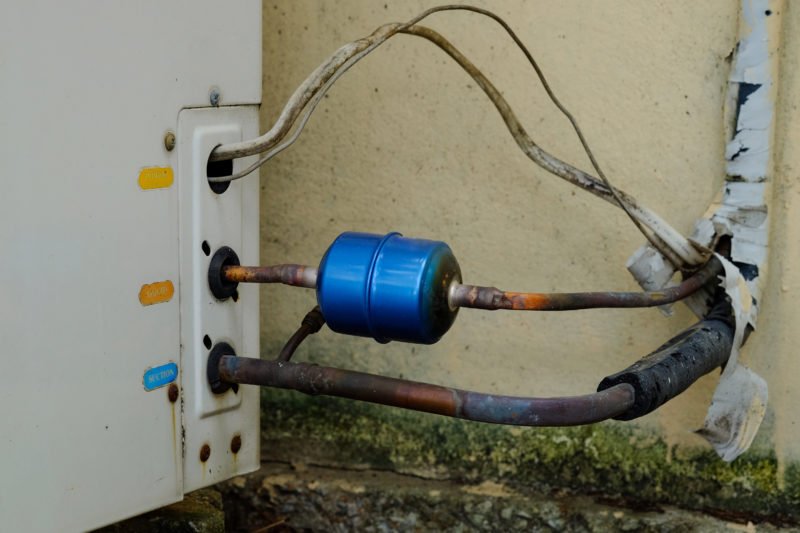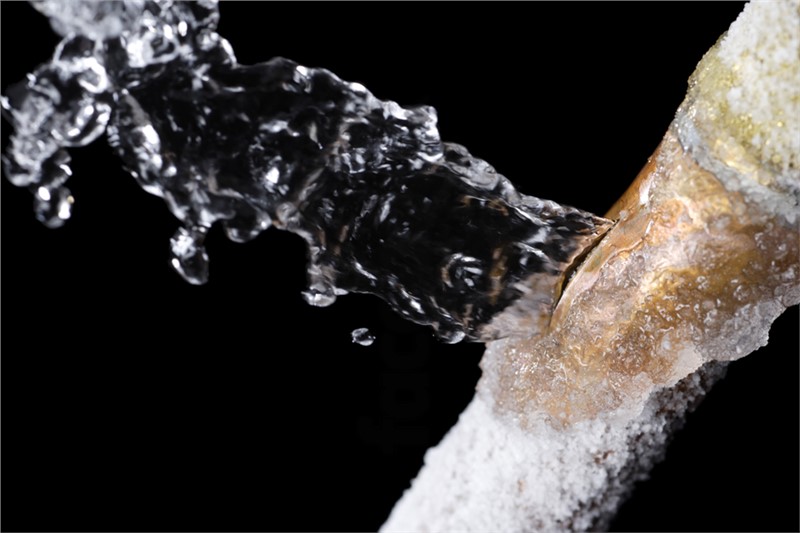Dealing with a Frozen AC Pipe: Effective Strategies
Dealing with a Frozen AC Pipe: Effective Strategies
Blog Article
We've come across this article on Why Is Ice On My Outside Air Conditione down the page on the internet and think it made sense to relate it with you on this site.

Intro
Finding that your air conditioning pipeline is frozen can be concerning, especially during warm summertime when you depend on your a/c one of the most. Recognizing what to do in such a scenario is essential to prevent further damage to your cooling system and ensure your comfort inside your home.
Recognizing the Causes
Numerous aspects can contribute to the cold of an AC pipeline. Recognizing these reasons can help you resolve the issue properly.
Absence of Airflow
One common reason for an icy a/c pipe is inadequate air flow. When the air movement over the evaporator coil is restricted, it can cause the coil to drop below freezing temperature, leading to ice development on the pipeline.
Reduced Refrigerant Levels
Insufficient refrigerant levels in your a/c system can additionally lead to a frozen pipeline. Low refrigerant levels can create the pressure in the system to drop, resulting in the cold of dampness on the evaporator coil.
Winter Conditions
In chillier climates, freezing temperature levels outside can add to the freezing of air conditioning pipelines. If your air conditioner unit is not correctly shielded or if there are leakages in the ductwork, cool air can infiltrate the system, creating the pipeline to freeze.
Dirty Air Filters
Unclean or clogged up air filters can limit airflow in your a/c system, resulting in various problems, consisting of a frozen pipe. It's vital to change or cleanse your air filterings system on a regular basis to ensure correct air flow and prevent ice buildup.
Indications of a Frozen AC Pipe
Acknowledging the signs of an icy air conditioning pipe is important for timely action.
Reduced Airflow
If you see a considerable decline in air flow from your vents, it could suggest an icy pipe.
Ice Buildup on the Pipe
Noticeable ice build-up on the refrigerant line or the evaporator coil is a clear sign of a frozen a/c pipeline.
Strange Sounds from the Unit
Unusual noises, such as hissing or gurgling, originating from your air conditioner unit can signal that there's ice existing on the pipe.
Immediate Actions to Take
When faced with a frozen a/c pipeline, it's important to act rapidly to stop additional damage to your air conditioning system.
Switching off the a/c
The primary step is to turn off your air conditioner to stop the system from running and aggravating the problem.
Looking for Blockages
Check the location around the interior system for any kind of obstructions that might be obstructing air flow, such as furnishings or drapes.
Defrosting the Pipe
You can utilize mild methods like putting towels taken in cozy water around the frozen pipeline to aid thaw it gradually.
Preventive Measures
Taking safety nets can help prevent future events of a frozen air conditioning pipeline.
When DIY Methods Fail
If your efforts to thaw the pipe or address other concerns are not successful, it's time to call an expert.
Value of Hiring a Professional HVAC Technician
A certified HVAC professional has the knowledge and devices essential to identify and repair concerns with your air conditioning system safely and efficiently.
Routine Maintenance Checks
Arrange regular maintenance checks with an expert HVAC technician to make certain that your air conditioner system is running successfully.
Changing Air Filters
Consistently change or cleanse your air filters to avoid air movement restrictions and keep ideal efficiency.
Protecting Exposed Pipes
If your air conditioning pipes are exposed to cool temperatures, take into consideration shielding them to avoid freezing during winter season.
Seeking Professional Help
If DIY techniques stop working to deal with the concern or if you're not sure regarding just how to proceed, it's finest to look for help from a certified HVAC specialist.
Final thought
Managing a frozen air conditioning pipeline can be an irritating experience, but recognizing how to respond can assist minimize damage and restore comfort to your home. By comprehending the reasons, identifying the indications, and taking timely action, you can efficiently resolve the problem and stop future incidents.
What to Do If Your AC Line Is Frozen
Make Sure All Supply and Return Air Vents Are Open
If you notice problems with airflow, the first thing you should do is check your supply and return vents. Supply vents distribute clean, conditioned air throughout your home. As this air becomes stale, it’s pulled into the return vent, where it’s reconditioned before being sent back out through the supply vent.
When these vents are closed, air won’t flow in the home. Before examining your AC, check the vents in every room and ensure they’re all open.
Check for a Dirty Air Filter
Another possible cause of limited airflow is a dirty air filter. Your air conditioner’s filters catch elements you don’t want to breathe in, such as dirt and dust. Over time, filters can become clogged, ultimately blocking air from flowing in and out. The lack of airflow can then cause the entire coil to freeze and will completely restrict any air from moving through it. The AC may need to be powered off for one to two days to allow the coil to thaw after replacing the filter to allow proper functioning of the unit. This debris can also accumulate on your AC’s evaporator coil, requiring a more serious repair. In general, air filters should be cleaned regularly (about every two weeks).
Assess Your Outdoor Unit
In addition to checking your AC, assessing the outdoor unit is a good idea. Also known as the condensing unit, it works with your interior unit to release heat outside. An issue with the outdoor unit can result in rising internal temperatures.
Overgrown Shrubs or Clogged Leaves
From leaves and twigs to shrubs and debris, there’s no shortage of outdoor elements that can accumulate around your condensing unit. When these elements get lodged inside the unit, they can block airflow. Fortunately, removing the blockage can solve the problem.
Sounds of a Broken Fan
Shrubs and leaves aren’t the only things that can impede your outdoor unit’s airflow. If the fan is broken, the unit won’t be able to properly get rid of heat — which means the internal temperature won’t go down. First, make sure the fan is spinning. If it is, check for the following sounds of a broken fan:
Buzzing Rattling Screeching Hissing Clicking Preventative Measures
Nobody wants to deal with a frozen AC line. In addition to causing problems with your air conditioner, they require professional repairs. On the bright side, there are preventative measures you can take to help ensure this issue doesn’t arise in the first place.
https://www.coopergreenteam.com/blog/what-to-do-if-ac-line-frozen

We had been brought to that write-up on Have a Frozen AC Line? Here’s How to Fix It through an associate on a different blog. Sharing is good. Helping people is fun. Thanks a lot for your time. Don't hesitate to stop by our blog back soon.
Book 24/7 Report this page